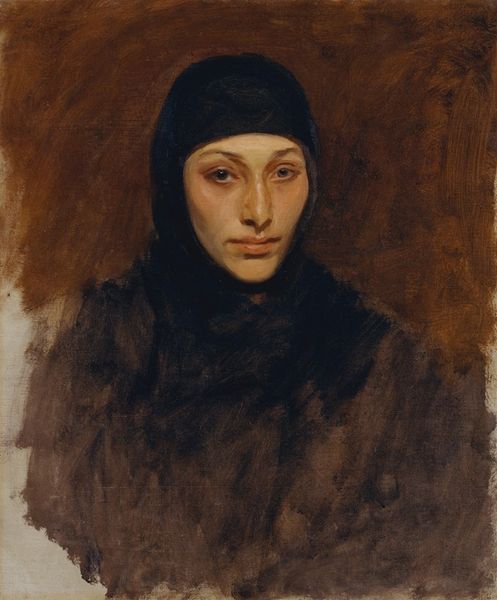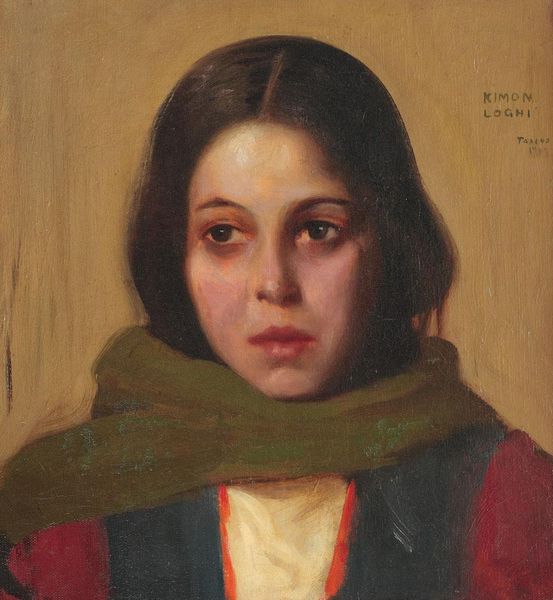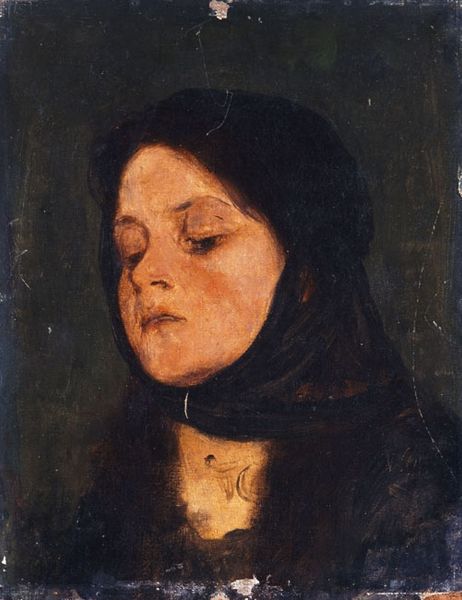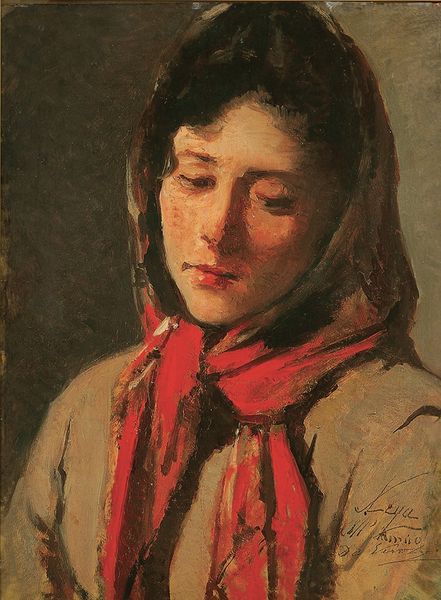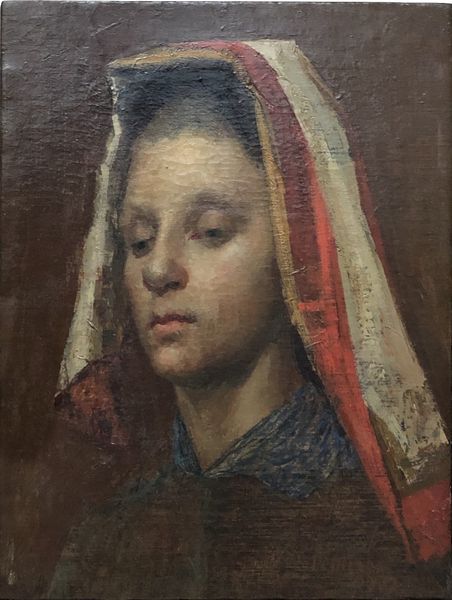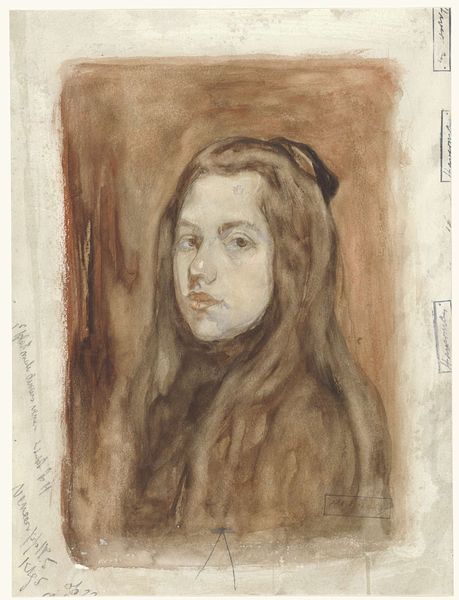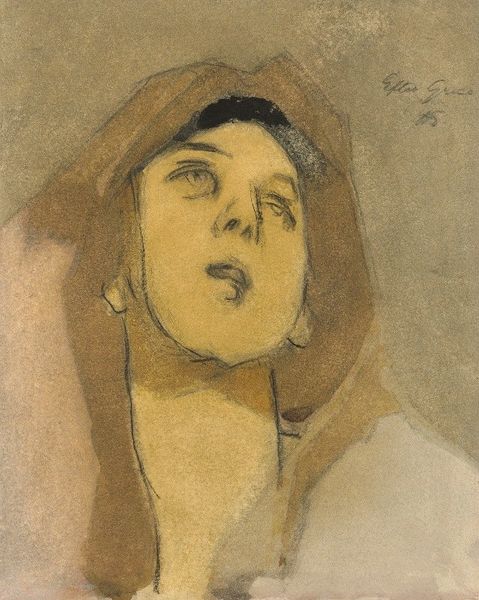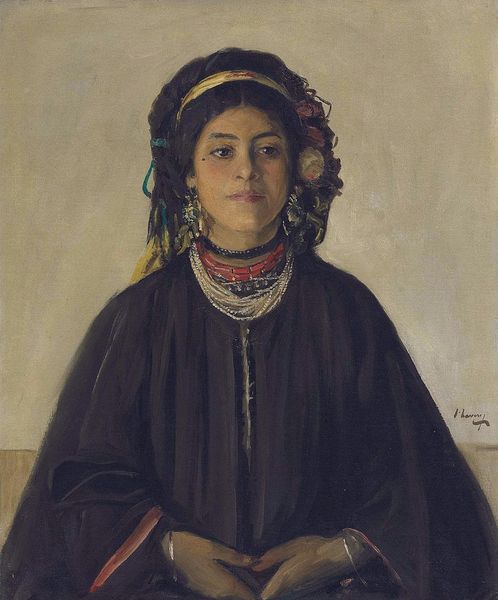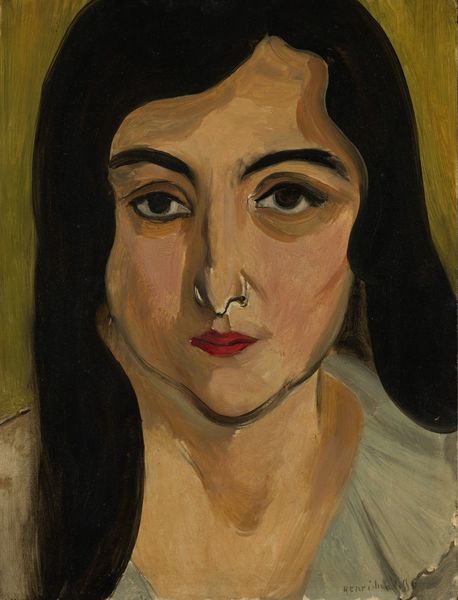
Dimensions: 46 x 37 cm
Copyright: Public domain
Editor: We're looking at "Wishbone," an oil painting by Nikolaos Gyzis, created in 1878. The subject's gaze is averted, creating a sense of introspection or maybe even longing. There’s something quietly powerful about this piece. What catches your eye, initially? Curator: You know, it's the contrast that grabs me. The rich, almost earthy reds playing against the stark, almost severe blacks of her headscarf and shawl. It feels both intimate and a bit melancholic. It’s as if he’s captured a fleeting moment, a half-formed thought. Don't you get that feeling? As if you’ve caught her mid-daydream? Editor: I do. It almost feels like a stolen glance. Do you think that was Gyzis's intent? To portray this candid moment? Curator: Maybe, or maybe he’s playing with the traditional portraiture of the era, injecting a bit of everyday life and interiority into a formal setting. Romanticism often delved into emotion. Notice how the light caresses her face but leaves the background rather flat? It's like isolating a precious thought from the chaos around it. Makes me wonder about her "wish," the one that's got her gazing off into the distance. Editor: That’s a lovely observation. The lighting really does isolate her, even with that bold red background. It almost feels cinematic in a way, thinking about it now. Curator: Yes, and I think the genius is in that simplicity. It leaves so much open to interpretation. The woman’s own inner life remains just out of reach, tantalizing us. You know, the more I look, the more stories I invent for her. Editor: That's beautiful. I initially saw a kind of wistful sadness, but now I see the possibility for a bit of defiant hope too, especially knowing it’s painted at a time of cultural transformation in Greece. It really invites conversation and speculation. Curator: Exactly. And that, my friend, is the beauty of art. It shifts with our gaze, echoes with our own stories.
Comments
No comments
Be the first to comment and join the conversation on the ultimate creative platform.
